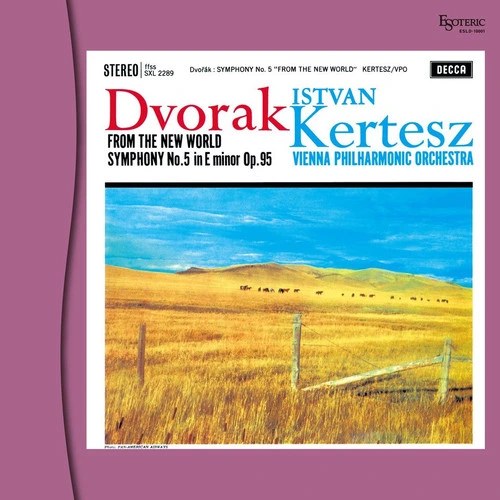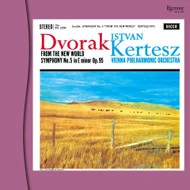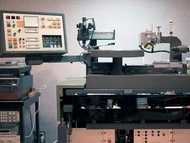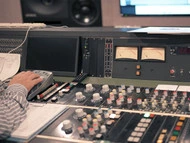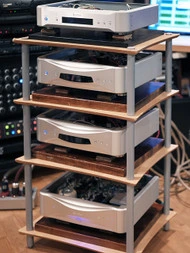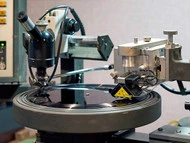All covers have minor corner bends, slight spine dents, and minor imperfections. Disc inside is undamaged.
This item not eligible for any further discount offers!
Esoteric Masterpiece Collection Limited Edition 180g Vinyl LP!
Remastered from the Original Master Tapes!
Renowned Conductor Kertész's Debut Album for DECCA!
The most dramatic "New World" in the history of recordings with the prestigious Vienna Philharmonic Orchestra
Istvan Kertész (August 28, 1929 - April 16, 1973) was the heir to the glory of Hungarian conducting, beginning with Nikisz and continuing with Fritschaj, Ormandy, Sell, and Solti, and dominated the conducting world in the 1960s. He was General Music Director of the Augsburg Opera (1960-1963), General Director of the Cologne City Opera (1964-1973), and Principal Conductor of the London Symphony Orchestra (1965-1968). In terms of recordings, he had made numerous masterpieces with DECCA, the Vienna Philharmonic, the London Symphony Orchestra, the Israel Philharmonic Orchestra, and many others. However, unfortunately, he drowned while swimming in Tel Aviv in 1973, and his early life will be sorely missed.
This album was a monumental recording that marked Kertész's debut on the prestigious DECCA label, and especially in Japan, since its release on King Records in 1961, it has been listened to as a standard "New World" recording of the analog recording era, along with the RCA version by Rainer/Chicago Symphony, Columbia version by Bernstein/New York Philharmonic, Epic version by Sell/Cleveland, DG version by Karajan/Berli Philharmonic, and others.
The young Kertész, 32 years old at the time, made use of the deep sound of the long-established Vienna Philharmonic Orchestra, while adding dramatic tempo changes and bringing the work to life with the fierce hammering of the timpani and roaring of the brass, with such thrilling passion that it reminded one of a live performance.
Five years later, in 1966, Kertész conducted the London Symphony Orchestra to re-record this symphony as part of the complete works of Dvorák symphonies. Although the fresh dynamism of the Vienna Philharmonic version was replaced by a more mature performance in his later career, many Japanese music fans still preferred the Vienna Philharmonic version.
This album was released on the SuperAudio CD Hybrid Series (ESSD-90015) in 2008 and on analog vinyl (ESLP-10002) in 2009. This is the second time in 14 years that the album has been released on analog vinyl record.
Masterful recordings at Zofiensaal, the famous hall where DECCA sound was born
Produced by Ray Minshall, who was responsible for many of Kertész's recordings for DECCA, and recorded with James Brown, the Zofiensaal was a home of DECCA for stereo sessions in Vienna from 1956 until the 1980s. The Zofiensaal was built in the early 19th century as a bathhouse and later used as a ballroom, where Johann Strauss frequently performed.
This venue was ideal for DECCA's policy of recording and reproducing every detail with clarity, and was where the legendary "Ring of the Nibelung" by Scholtei was recorded and other great recordings that represented the DECCA sound.
This "New World" was also one of the finest recordings that wove the tradition of the "famous recordings at the Zofiensaal." And, its clear and three dimensional timpani, fragrant and brilliant brass, unique soundings of woodwinds such as the wiener oboe and clarinet, and silky yet thick string parts (especially the burly low strings) are still sounding vivid and fascinating audiophiles, after half a century it was recorded.
Producing the analog vinyl records under the best avilable condition
The analog vinyl records of the "Masterpiece Collection" have been reissued by re-mastering the original master tapes, exclusive for the vinyl records. The mastering process employs the newly established "Esoteric Mastering" system, including ESOTERIC's top-of-the-line equipment "Master Sound Discrete DAC" and "Master Sound Discrete Clock." In addition, the MEXCEL cables are sparingly employed to achieve flawless high quality sound as the master data.
The Analog cutting process has been performed at MIXER'S LAB in Tokyo employing the Neumann VMS80 cutting lathe, a famous machine manufactured in West Germany in the golden era of the analog audio, of which only two remain in Japan.
The "Esoteric Mastering" equipment is also employed to send out master data for analog cutting machine. Collaborating with the MIXER'S LAB, the "Esoteric Mastering" equipment was brought into their cutting room and connected the output directly to the Neumann SP79C cutting console. The "Esoteric Mastering" sound is sent directly to the cutting process bypassing the equalizer section of the console. The cutting process is performed by Mr. Katsutoshi Kitamura, a cutting engineer at MIXER'S LAB, and he put his master craftsman skills into the master disc.
Analog Cutting Equipment:
- Cutting Lathe: Neumann VMS80
- Cutting Console: Neumann SP79C
- Cutter Amp: Neumann SAL74B
- Cutter Head: Neumann SX74
Today, it is rare to cut a lacquer disc just for audition purposes, only master discs are cut for record pressing. However, in order to pursue sound quality, ESOTERIC created a number of lacquer discs with different transmission methods to the console.
Those lacquer discs created were taken back to the ESOTERIC Mastering Center to be auditioned and sound quality checked on ESOTERIC's Grandioso T1 analog turntable to determine the best transmission method.
This is how Esoteric created vinyl records extending the information contained in the original master tape ,with a focus on the analog sound.
One of the ideal "New World" that combines all elements (from the first LP review)
The imposing size of the stance and the thick way the orchestra resonates may be the result of an attempt to capture this piece symphonically, but in this way it is far superior to Karajan's and others'. It is not merely a symphonic interpretation, because it contains all kinds of diverse elements. The tempo moves widely and frequently, but in some cases they enliven the music intensely, while in other cases it performs with a nostalgic sentiment. The strings fully utilize the virtues of the Vienna Philharmonic to express the elegant nuances of longing to their heart's content, while the brass demand a rough-hewn intensity that one would not expect from the Vienna Philharmonic to portray an earthy aspect of the piece. The power of the timpani is also evident. I must say that it is a truly a magnificent, all-encompassing, ideal "New World".
— from the "LP Techou" by Kouhou UnoRe-mastering
Producer: Motoaki Ohmachi (ESOTERIC COMPANY)
Mastering Engineer: Masaya Touno (ESOTERIC COMPANY)
Technical Engineer: Tetsuya Kato (ESOTERIC COMPANY)
Cutting Engineer: Katsutoshi Kitamura (MIXER'S LAB)
Features
- Limited Edition One-Time Pressing
- Esoteric Masterpiece Collection
- 180g Vinyl
- Digitally Remastered Using Esoteric Mastering
- Analog Cutting by Mr. Katsutoshi Kitamura at MIXER'S LAB in Tokyo
- OBI Strip
- Made in Japan
Musicians
| Vienna Philharmonic Orchestra | |
|---|---|
| István Kertész | conductor |
Selections
Antonin Dvorák (1841-1904)
Symphony No.5 in E minor, Op.95 "From the New World"
Side One:
- 1st mov. Adagio-Allegro molto
- 2nd mov. Largo
Side Two:
- 3rd mov. Scherzo (Molto vivace)
- 4th mov. Allegro con fuoco
Recorded at Sofiensaal, Vienna on March 22-24, 1961.

 Turntable Accessories
Turntable Accessories Headphone Accessories
Headphone Accessories Cable Accessories
Cable Accessories Vinyl Accessories
Vinyl Accessories Compact Disc Accessories
Compact Disc Accessories